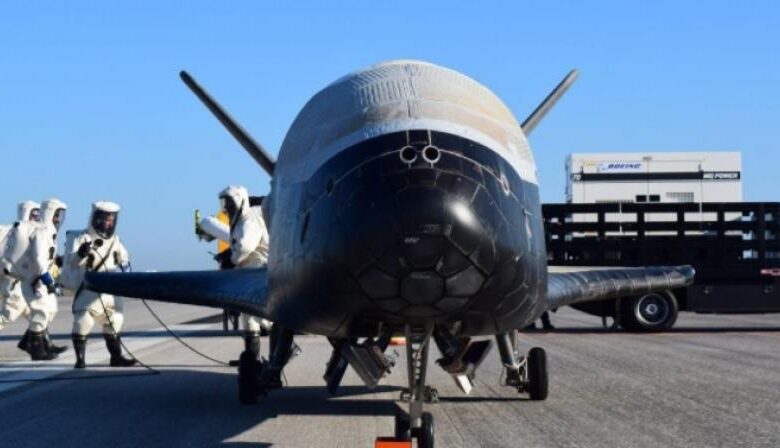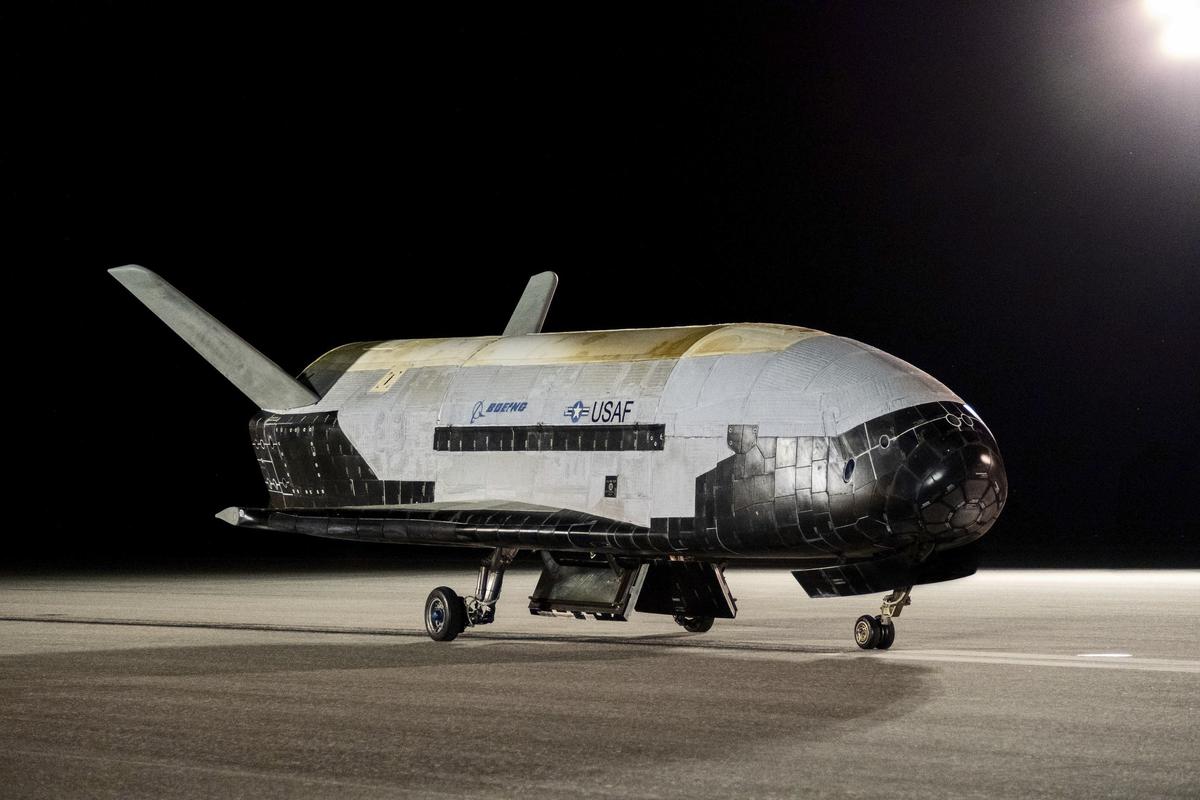X – 37B, A Solar – Powered Space Plane Of US Is Back After 908 Days Now
The X-37B's cargo hold (where cargo is packed) is about 4 feet wide and 7 feet long — the size of a pickup truck bed. However, it is not clear what the X-37B is carrying there. Air Force officials usually talk about the program's overall goals, stressing that each payload is classified.

- A plane of the US military, unmanned, X – 37B came down on Saturday after conducting science experiments on its sixth mission The plane spent a record 908 days in orbit. First of all, the plane hosted a service module that directed trials and experiments for the US Air Force Academy, the Naval Research Laboratory, and others. The plane weighs 11,000 pounds at launch (4,990 kilograms).
The X-37B plane’s cargo hold (where cargo is packed) is about 4 feet wide and 7 feet long — the size of a pickup truck bed. However, it is not clear what the X-37B is carrying there. Air Force officials usually talk about the program’s overall goals, stressing that each payload is classified. Just like the Space Shuttle, the X-37B space plane, solar-powered, takes off vertically using a rocket and returns to Earth to land on a runway.
The small space plane is designed to operate at altitudes from 110 to 500 miles (177 to 805 km). The X-37 (plane) program began in 1999 with NASA. In 2004, NASA transferred the project to the US military – namely the Defence Advanced Research Projects Agency (DARPA). DARPA completed part of the ALTV program in 2006 and conducted a series of captive and free-flight tests.
About X – 37B Program
The X-37B program is now operated by the Air Force Rapid Capability Office with Orbital Mission Control based out of the 3rd Space Experiment Squadron at Schriever Air Force Base, Colorado. Spacecraft are manufactured by Boeing’s Phantom Works division. Orbital experience Two different X-37B vehicles completed a total of five missions, namely – OTV-1 (Orbital Test Vehicle – 1), OTV-2 (Orbital Test Vehicle – 2), OTV-3 (Orbital Test Vehicle – 3), and OTV-4 (Orbital Test Vehicle – 4).

Four flights reached space using United Launch Alliance’s Atlas V rocket. OTV-2 returned to Earth 468 days later in June 2012 after getting launched in March 2011. OTV-3 uses the same machinery that flew on the OTV-1 mission, launched in December. OTV-4 began on May 20, 2015, and surpassed the record of OTV-3 on March 25, 2017. The OTV-4 mission ended with a soft landing to orbit on May 7, 2017, after 718 days in space. It was the first X-37B to land on the Space Shuttle NASA in Cape Canaveral at the Kennedy Space Center, Florida.
The OTV-5 mission launched on September 7, 2017, aboard SpaceX’s Falcon 9 rocket from the historic Launch Complex 39A at NASA‘s Kennedy Space Center (KSC) in Florida. The 780-day mission (another record) was conducted by the Air Force Research Laboratory’s Advanced Structurally Embedded Thermal Spreader, an experiment designed to “test experimental electronics and oscillating heat pipe technologies,” according to a statement by Air Force.
0n October 27, 2019, OTV-5 landed at NASA’s Space Shuttle Landing Facility. “The X-37 is a technology test platform, and the mission is to push the boundaries,” Joan Johnson-Freese, a professor of national security affairs at the Naval War College in Newport, R.I., told Space.com, citing OTV. -3. All X-37B missions to date have taken off from Cape Canaveral Air Force Base in Florida.
/2022/11/13/image/jpeg/GJaQK6tsHlz3UKQ3jXtaDw6NuS6MHoV9pGVthJAw.jpg)
NASA’s Role In X – 37B Program
The National Aeronautics and Space Administration (NASA) was established in 1958 for the research and development of vehicles and was formed largely in response to the Soviet launch of Sputnik in 1957. It was organized around the National Advisory Committee for Aeronautics (NACA), which was created by Congress in 1915. NASA was in full swing in the early years of the press of John F. Kennedy. He proposed that the United States send a man to the moon by the end of the 1960s. The Apollo program was designed for this purpose, and in 1969 American astronaut Neil Armstrong became the first man on the moon.
Later unmanned programs like Viking, Mariner, Voyager, and Galileo – explored other solar system bodies. NASA consists of four mission directorates:
Aeronautical Research, for the development of improved aviation technologies; Science, dealing with programs to understand the evolution of the universe, the solar system, and the Earth; Space technologies for the development of space science and exploration technologies; and Human Exploration and Operations, relating to the management of manned space missions, including missions to the International Space Station, operations related to launching services, space transportation, and space communications for both the manned and robotic exploration programs.

Several other research centers are affiliated, including the Goddard Space Flight Centre in Greenbelt, Maryland; Jet Propulsion Laboratory in Pasadena, California; Johnson Space Center in Houston, Texas; and the Langley Research Centre in Hampton, Virginia. NASA is based in Washington, D.C.
A space Weapon?
The secrecy surrounding the X-37B plane and its cargo has fueled rumors that it could be some kind of space weapon, perhaps tasked with intercepting or damaging other countries’ satellites. Its aim is what Air Force officials have said all along: to test other next-generation satellite technologies or new sensors to see how they perform in the space environment and hold everything.
edited and proofread by nikita sharma




